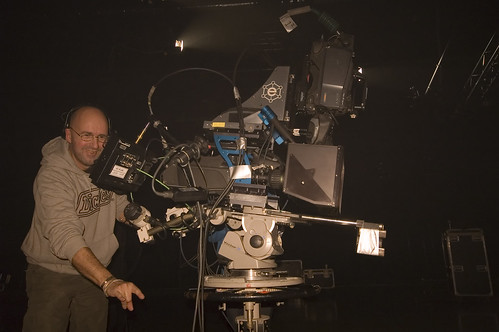
Image : http://www.flickr.com
With the competing technologies of Plasma, LCD and DLP, it is probably obvious that the LCD proves its winning streak.
Right now, LCD's fame and distinction have exploded. They are now considered to be the most advanced and latest high definition form of viewing. Let us review how everything that we know about LCD materialized.
It is a usually unknown fact that the LCD technology came form the year 1888 when Austrian scientist Friedrich Reinitzer discovered the properties of liquid crystallization. In computation, the LCD TV concept is more or less eighty years of age. So when this concept was introduced, engineers used it in marketing their products. The first hard work was recognized to be from George Heilmeier who is an Electrical Engineer from the University of Pennsylvania. He utilized liquid crystallization process in his commercial products. He has a Ph.D, M.S.E., and M.A's Solid State Electronics from the Princeton University. While working with colleagues Nunzio Luce, Louis Zanoni, Lucian Barton, Joel Goldmacher, Joseph Catellano, and Richard Williams, he developed the LCD technology one at a time.
Before the LCD system came together as a whole new technology, its parts were conceived separately. Liquid crystal display or LCD was a by-product of the experimentation with liquid crystals. While the mentioned brains of this technology were experimenting, they found out that it is possible to create clock, digital watches, and calculators through what later came to be known as LCD technology. The digital clock that is famous today is from Heilmeier's hard work with RCA.
The LCD technology was passed to and further developed by James Ferguson. He is a University of Missouri graduate and became the director of the Kent State University's Liquid Crystal Institute. He was able to discover the nematic field effect which led to the prototype for LCD TV displays in the present time.
In 1971, Ferguson's team was able to unveil the first LCD but unfortunately it seemed to be a disappointment because of the "phantom images" that were displayed during its action broadcasts. They have made necessary arrangements and improvements thus the creation of the modern day LCD. Picture transmission was improved and so picture quality became better. Because of this extreme hard work, Ferguson was able to make 100 patents and build his own corporation.
LCD truly came from an amazing mental power and hard work. Right now, LCDs are most likely to replace the traditional cathode ray tubes (CRTs) and improve the home viewing experience of every user. Let us be grateful and thank these brilliant minds for coming up with a brilliant screen for a far more brilliant home theater experience.
Related : Television reviews
No comments:
Post a Comment